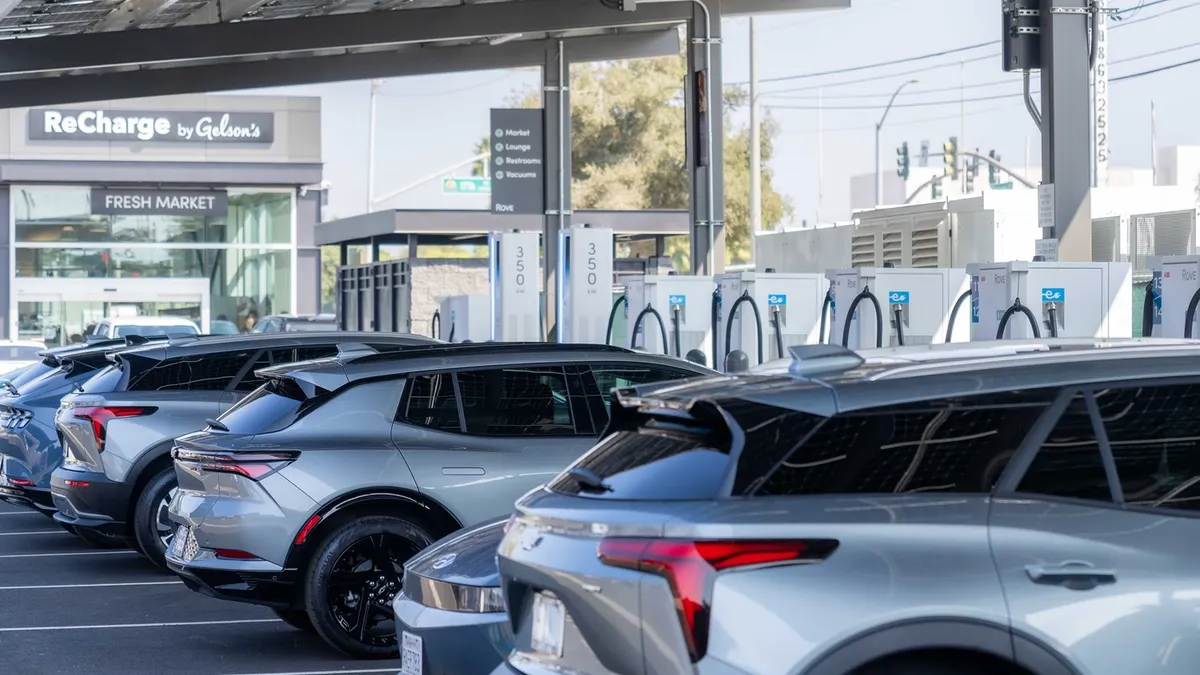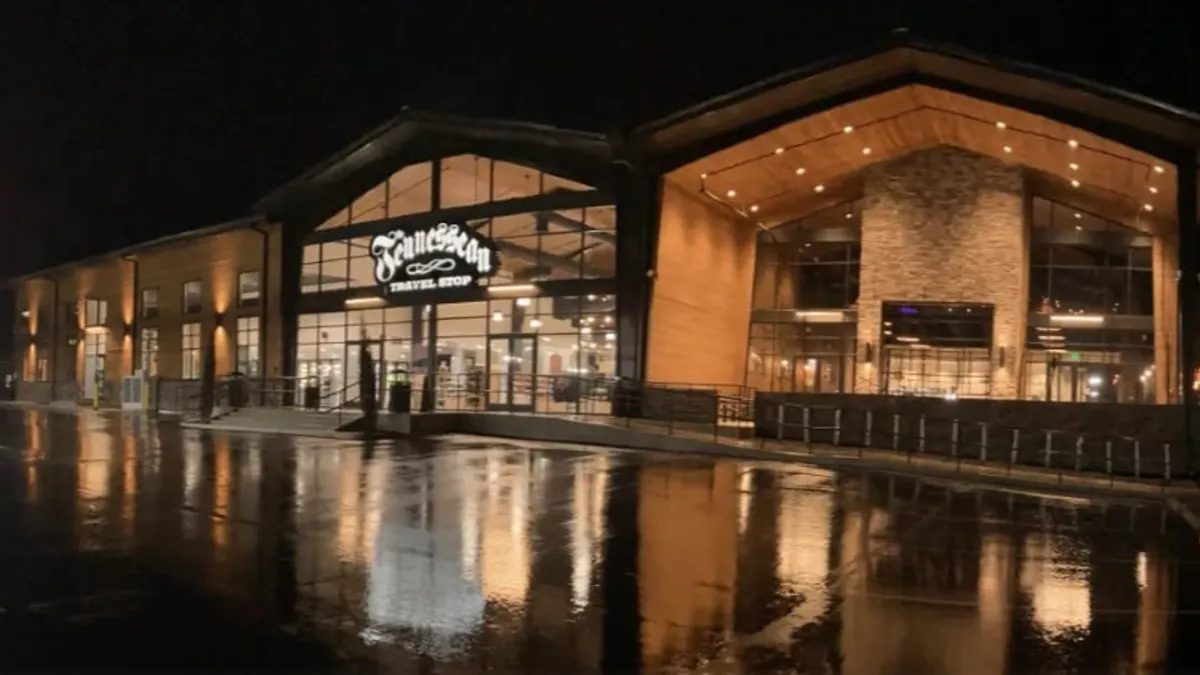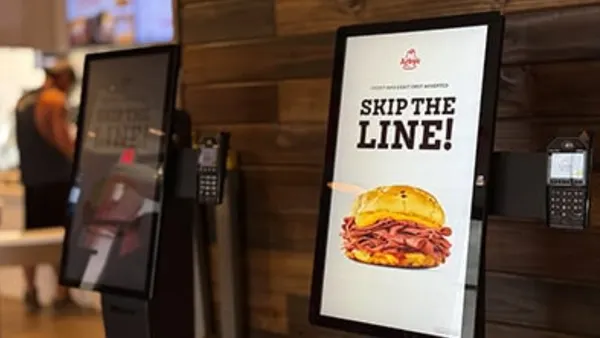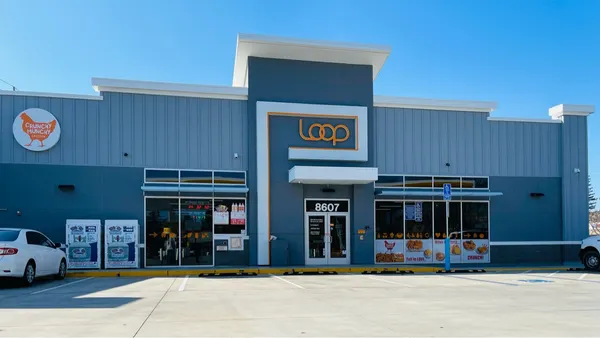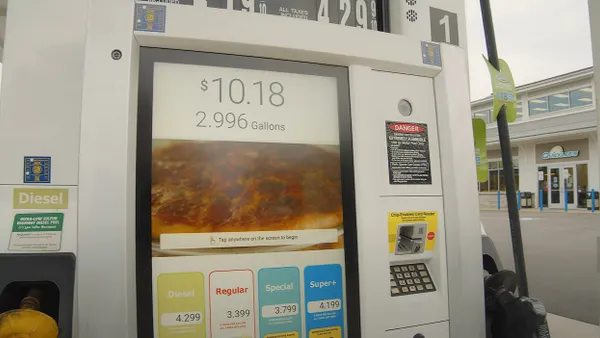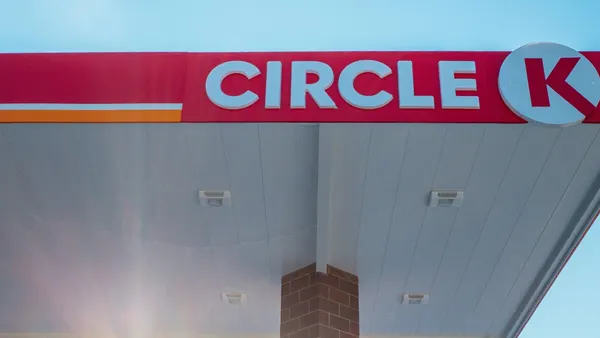Convenience stores are drawing in more electric vehicle drivers but are falling behind restaurants, according to a new report from the Transportation Energy Institute’s Charging Analytics Program.
Average monthly charging sessions at c-stores between September 2023 and December 2024 increased 21%, to 137. However, restaurants outpaced them, surging 22% to 225 monthly sessions during the same period, according to the report.
The report found that chargers that offer at least 300 kilowatts were the most popular among all surveyed drivers, seeing an average of 325 charging sessions per month. That’s tough news for c-stores, which are located near more 100 kW-299 kW chargers than any other type of retail establishment. Restaurants, meanwhile, are most often near charging stations that offer at least 300kW, according to the report, which factored in chargers that appear within 100 meters of any retailer.
While Kwik Trip’s chargers can supply up to 400 kW to one vehicle, c-store retailers like Royal Farms and Jacksons Food Stores both recently added 180 kW chargers.
Chargers between 100 kW and 299 kW still saw an average of 168 sessions per month. However, these numbers suggest sites with more powerful chargers are at an advantage.
As more electric vehicles hit the road, charging sessions were up across the board during the period measured by the Transportation Energy Institute. Utilization — the percent of time that charging plugs are in use — was also up for all categories, with c-stores leading the charge with a 36.5% improvement. Still, utilization of chargers at c-stores averaged out to just over 12% — behind restaurants and fueling stations.
Having a liquid fuel offering seems to boost a site’s attraction for EV drivers as well. Fuel retailers consistently saw more average charges per month and higher utilization than chargers near convenience stores. A charger near a c-store with fuel would count for both categories, but one near a fuelless c-store would only count for the latter.
Another major factor may be location, with the report noting that 70% of fast-charging sessions occurred less than a mile from a highway ramp. This could be good news for retailers like Pilot, Love’s and Buc-ee’s, which are often located at major exits.
Finally, reliability continues to be a concern. While the number of failed charges was down about 4% for c-stores, the overall number of charging sessions that failed to initiate was still around 17% to 18%, meaning that nearly one out of five attempts to charge had a problem, according to the report.


